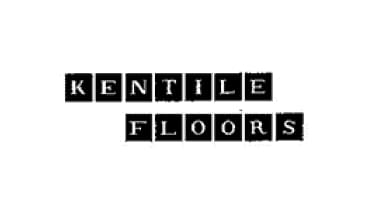Kentile Floors
Founded in 1898 by Arthur Kennedy in Brooklyn, New York, Kentile Floors produced vinyl, cork and rubber floor tiles. Kentile specialized in large, durable tiles made of a range of materials, including as much as 25 percent asbestos.

Kentile Floors History and Asbestos Legacy
Many remember Kentile Floors for the company’s eight-story sign visible from the Gowanus Expressway in Brooklyn. When lit up in bright neon purple, the sign could be seen from miles away.
Unfortunately, the company also is remembered for using toxic asbestos in a variety of its products, including asphalt and vinyl floor tiles.
Occupations At-Risk for Exposure from Kentile Products
Employees of Kentile Floors and workers whose occupations placed them in contact with the company’s asbestos-containing floor tiles were at increased risk of asbestos exposure. Asbestos can lead to serious respiratory conditions including asbestosis, mesothelioma and lung cancer.
Occupations with Potential Kentile-Related Asbestos Exposure
- Tile installers
- Carpenters
- Painters
- Plumbers
- Electricians
- Floor manufacturing facility workers
Employees of Kentile Floors are considered at increased risk of asbestos exposure from the company’s products. As with other workers in companies that produce asbestos-containing products, Kentile workers may have been exposed during various stages of the manufacturing process.
Similarly, other occupations at risk of asbestos exposure exist because use of Kentile’s flooring products was so widespread.
Most other construction and industry workers didn’t actually install the flooring, so for them, the asbestos products mainly posed a threat if they were disturbed during demolition, remodeling or floor replacement.
When pulled, ground, cut or destroyed, the tiles potentially release asbestos fibers into the air, making them easier to inhale. They may end up on hands and lips, leading to fibers being swallowed, too.
Others at Risk of Kentile Floor Tile Asbestos Exposure
The company’s floor tiles are commonly categorized as nonfriable, referring to the product’s limited likelihood of crumbling and releasing asbestos fibers into the air when properly handled, installed and left in place.
Still, flooring installers and repairmen can accidentally expose themselves to the hazards associated with asbestos exposure by handling Kentile’s tiles and flooring products.
Homeowners are another group at risk of asbestos exposure because of the continual interaction with these asbestos products. Damage to Kentile’s flooring during improper repairs or home construction projects can result in asbestos exposure.
Any disturbance of these products should be handled with extreme care. Homeowners should seek professional removal services if they suspect their flooring may contain asbestos.

Get help paying for treatment and other expenses by accessing trust funds, grants and other options.
Access Funds NowKentile Floors Asbestos Products Through Time
Kentile Floors sold a variety of asbestos products prior to the dangers of asbestos becoming known.
The company’s branded products include:
- KenFlex floor tiles
- Kenlite asphalt vinyl tiles
- Kencork cork floor tiles
- Kenrubber rubber floor tiles
By 1949, Kentile Floors produced asphalt-based tiles and emerged as an industry leader. It advertised in Popular Science Magazine and similar publications in the 1950s.
Kentile advertised its “glowing, greaseproof floor is easy to keep clean.” The manufacturer also promoted the floor tiles’ “sturdy asbestos fibers.” The tiles were recognized for being durable and heat resistant, common qualities of asbestos-containing products.
During the 1950s and 1960s, Kentile Floors was one of America’s largest manufacturers of super-resilient floor tile, and it was a national tile distributor. The company’s asphalt and vinyl products used asbestos fibers for reinforcement and asbestos powders as filler.
By 1969, Kentile was producing vinyl sheet flooring, which is an inexpensive and durable flooring usually cut to the size of a room and installed in one piece. Unfortunately, this type of flooring had friable asbestos backing and posed a high exposure risk if disturbed or damaged.
While Kentile’s cork floor tiles likely do not contain asbestos, vinyl tiles manufactured to look like cork are known to contain the toxic mineral.
Kentile Asbestos Liability and Bankruptcy
Kentile Floors eventually stopped using asbestos in its products. But its flooring already existed for years in homes, offices, schools and other buildings across the country. When the floors were torn up and removed during renovations years later, asbestos exposure became a serious issue.
After facing thousands of asbestos-related lawsuits, Kentile Floors filed for bankruptcy in 1992. The company reorganized as Metex Manufacturing Company in 1998 and took on Kentile’s asbestos liabilities.
Metex filed for bankruptcy in 2014 and established the Metex Asbestos PI Trust a year later.
Establishment of Kentile-Metex Asbestos Trust
Kentile Floors faced an estimated 20,000 asbestos claims when it filed for reorganization in 1992. Kentile was not able to get an asbestos trust approved to pay future claims. When it reemerged as Metex in 1998, the company became responsible for lawsuits against Kentile.
When Metex later filed for bankruptcy reorganization in the federal court in New York in 2014, it faced about 6,000 active claims. This time, the court approved Metex to establish an asbestos trust, which initiated in 2015.
The approval protects Kentile/Metex from personal injury lawsuits, but the company must fund the trust with enough money to pay current and future asbestos claims.
In June 2020, the trust’s payment percentage was reduced to 7.25%, which is a relatively common percentage compared to other asbestos trust funds. The trust was established with $193 million, and the payment percentage changes to ensure enough funds remain in the trust to compensate future victims.
Notable Kentile Lawsuits
In addition to thousands of personal injury lawsuits, the company faced the prospect of further liability in 2006 after being named in a mass tort action along with other former asbestos manufacturers, including J.A. Sexauer and Pecora Corporation.
In Beverly Fisher v. J.A. Sexauer, Kentile and Pecora Corp., the wife of a former plumber alleged various companies contributed to her husband’s lung cancer. It was later determined Kentile Floors couldn’t be proven sufficiently liable for Sidney Fisher’s lung cancer.
After appeal, the Superior Court of Pennsylvania in 2012 found no reversible error in the trial court’s decision, and the original ruling stood.
In August 2010, Kentile was found liable in the pain and suffering of Judith Harrell in the case William Harrell and Judith Harrell v. Allied Packing and Supply Inc. et al.
The company was deemed responsible for 6% of the nearly $1.6 million verdict. Kentile’s asbestos-containing products were listed as a contributor to the plaintiff’s pain, alongside Ford Motor Co., ExxonMobil, Georgia-Pacific Corp. and other large manufacturers.
Recommended Reading


